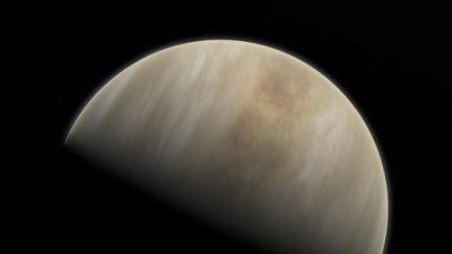Life floating in the clouds of planet Venus?
Given everything known about Venus and the conditions that exist there, no-one has yet been able to describe an abiotic pathway to phosphine

Scientists are now considering that living organisms are floating in the clouds of planet Venus after detecting a gas in the atmosphere that they can't explain.
That gas is phosphine - a molecule made up of one phosphorus atom and three hydrogen atoms, reports the BBC.
On Earth, phosphine is associated with life, with microbes living in the guts of animals like penguins, or in oxygen-poor environments such as swamps.
Prof Jane Greaves, from Cardiff University and colleagues are inquiring as to how phosphine gas got in the clouds of Venus.
They have published a paper in the journal Nature Astronomy detailing their observations of phosphine at Venus, as well as the investigations they've made to try to show this molecule could have a natural, non-biological origin.
Given everything known about Venus and the conditions that exist there, no-one has yet been able to describe an abiotic pathway to phosphine, not in the quantities that have been detected - bringing a life source in consideration.
"Through my whole career I have been interested in the search for life elsewhere in the Universe, so I'm just blown away that this is even possible," Prof Greaves said.
"But, yes, we are genuinely encouraging other people to tell us what we might have missed. Our paper and data are open access; this is how science works."
Prof Greaves' team first identified phosphine at Venus using the James Clerk Maxwell Telescope in Hawaii, and then confirmed its presence using the Atacama Large Millimeter/submillimeter Array in Chile.
Phosphine has a distinctive "absorption line" that these radio telescopes discern at a wavelength of about 1mm. The gas is observed at mid-latitudes on the planet at roughly 50-60km in altitude. The concentration is small - making up only 10-20 parts in every billion atmospheric molecules - but in this context, that's a lot.
Venus is not at the top of the list when thinking of life elsewhere in the Solar System. With 96 percent of the atmosphere made up of carbon dioxide, it has experienced a runaway greenhouse effect. Surface temperatures are lover 400 degrees.
Space probes that have landed on the planet have survived just minutes before breaking down. And yet, go 50km up and it's actually "shirtsleeves conditions". So, if there really is life on Venus, this is exactly where one might expect to find it.
The clouds. They're thick and they're mainly composed (75-95 percent) of sulphuric acid, which is catastrophic for the cellular structures that make up living organisms on Earth.
Dr William Bains, who's affiliated to the Massachusetts Institute of Technology (MIT) in the US, is a biochemist on the team. He has studied various combinations of different compounds expected to be on Venus; he has examined whether volcanoes, lightning and even meteorites could play a role in making PH3 - and all of the chemical reactions he has investigated, he said, are 10,000 times too weak to produce the amount of phosphine that's been observed.
To survive the sulphuric acid, Dr Bains believes, airborne Venusian microbes would either have to use some unknown, radically different biochemistry, or evolve a kind of armour.
"In principle, a more water-loving life could hide itself away inside a protective shell of some sorts inside the sulphuric acid droplets," he told Sky At Night.
"We are talking bacteria surrounding themselves by something tougher than Teflon and completely sealing themselves in. But then how do they eat? How do they exchange gases? It's a real paradox."



 Keep updated, follow The Business Standard's Google news channel
Keep updated, follow The Business Standard's Google news channel















